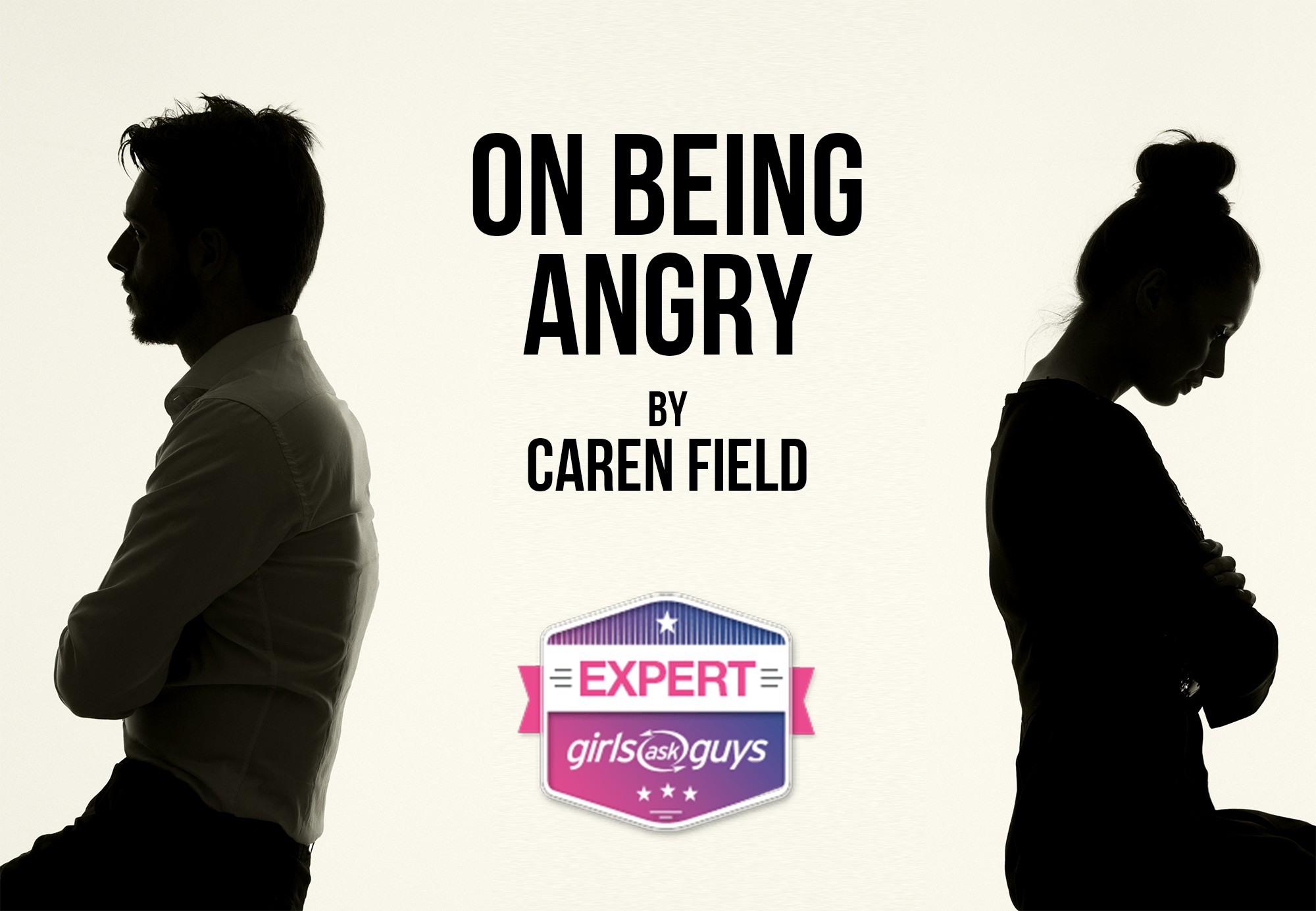
People often think anger is so bad they don't feel safe exhibiting it, so they will pretend that they don't have such emotions. When discussing my eBook, 7 Steps on the Path to Partnership, with clients I notice a lot of people get to the step on anger and then comment, “I don't have to work on this step because I don't get angry,” or, “This step doesn't apply to me. I don't get angry because there's no point.” I find this fascinating because everybody gets angry. Just because we might not express our anger in an unproductive way doesn't mean we don't get angry. Anger is a natural response for human beings. Pretending you don't get angry is like pretending you don't poop.
Anger has many forms and many names, existing on a continuum from annoyed and bothered to fury and rage. While we have a built-in radar to spot anger in other people, we aren't always so quick to spot it in ourselves. Misunderstanding and mishandling our own anger is one of the biggest barriers to having happy, healthy relationships.
Recognizing our anger and distinguishing what's happening in our own bodies, in our own experience, is one step in productively dealing with our anger. It's important we recognize the signs that we're getting angry because the sooner we spot it, the sooner we can do something about it, before the inertia takes over.

Often times people will describe the reason for getting annoyed, irritated, frustrated, mad, or having a violent outburst by yelling or hitting, as happening because someone or something made them mad or they “just snapped” or something “took over” them. While it really feels like what's happening, it's not what's happening . Similarly, it really feels like the sun is going around the Earth (because you can watch it moving across the sky) but it's not what's happening. Let's take a closer look to see what's really going on.
A perceived threat takes place: someone does (or doesn't do) something or they say (or don't say) something. We don't like it, for whatever reason, and then we get angry. The anger is designed to protect us from the perceived threat.
We can display anger (express it) in hopes that our “enemy” will back down and we defeat them, in order to diffuse the threat. Alternatively, we can suppress anger (bottle it up) in hopes of not further upsetting the “enemy” or in trying to please them, in order to keep the peace. Most often though, we don't end up with any of those results. We end up either triggering our partner's anger and perpetuating the problem or withdrawing and becoming bitter and resentful instead.
Expressing our anger automatically triggers our partner making their defense mechanisms kick in; now we're both in survival mode. Productive conversation is not happening in survival mode. On the other hand, bottling up our anger creates a time-bomb that eventually is going to implode or explode. Neither expressing nor bottling up our anger are recommended because both get us nowhere, perpetuating the cycle of more anger and more upset. If expressing our anger is a mistake, and bottling it up is a mistake: Are we all doomed?
No, we actually have an alternative. We can uncover the source of our anger, which I teach my clients how to do easily using a process that automatically diffuses the anger. Then we can EXPLAIN our anger, making it possible to have conversations that will make a difference, not just go in circles. A conversation capable of resolving the conflict, healing the pain, and reconciling our differences is a conversation worth having.

Explain You Anger is one of the steps required for healthy partnerships. If you could explain why you're angry (without expressing any of the anger) you would be heard. Explaining anger is simple; the trick is finding what's underneath the anger so it can quickly be diffused. I've discovered a really simple way to find out what that is, but you have to look in the right place. Most of us look in the wrong place. And it's not at all surprising that we don't know where to look because a) we don't learn this in school and b) it's counter-intuitive. If you're interested in learning more about this, I'll be happy to work with you.
What you can do today is practice catching yourself getting angry. Make it a game where the sooner you spot it the better. Maybe you can notice it when your heart starts beating fast, or when you feel the “angry heat,” or when you start to grind your teeth. Hopefully you'll catch it before you raise your voice, or throw things, or before your skin gets green and you grow three times your size!
Once you catch it you can start to make a difference by saying something like:
- I'm feeling angry about this. Can I have some time to think about it before we go on?
- I need a minute, can we talk about this a little later?
- This conversation is starting to make me upset and I don't want to say something I'll regret. Can you give me a minute to collect my thoughts and I'll be right back?
And there's always:
- Excuse me, I have to go to the bathroom.
And then get yourself together and spend some time thinking about what actually made you angry.
Refusing to express your anger will go a long way toward making the environment safer for you and your partner to communicate together. Refusing to bottle up your anger will go a long way toward keeping your own stress levels down making it less likely for you to get triggered. Committing to explaining your anger is an important step on the path to partnership.

Written by Caren Field
Caren Field is an individual and couples counselor who teaches people how to get out of their own way so they can create healthy and happy partnerships with the people that matter most to them. Her on-line courses Partnership Q&A Call Program and The Path to Partnership Bootcamp is designed for smart, successful people who are open to learning and willing to do what it takes to become an amazing partner.
Check out Caren Field's Profile
What Girls & Guys Said
Opinion
2Opinion
My teacher actually tried to explain something similar to me during highschool, although I was a stupid little shit kid and didn't give a fuck so I raged at her.
This is actually rather helpful as I do suddenly burst out in anger at times when people get a bit too close my personal space.
Also you're good at making things readable. Most of the times I'm not able to sit through a text like that.
According to me, anger comes from expectation even if subconsciously and anger is quite a potent weapon when channeled properly. The difference between lighting TNT in a barrel and the same being shot through a muzzle. Letting out anger in a channeled manner i. e. knowing what can trigger anger and using that same productively makes more sense to me - isn't that another way of not bottling up anger? I've been doing what I described for years & it's good result :-)